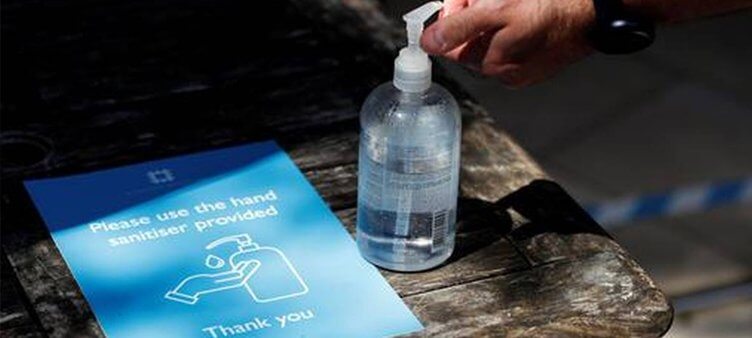
Now that hand sanitiser has become as regular a part of our day as eating dinner, brushing our teeth, and, well, breathing, there’s no doubt that you’ll be getting through bottles upon bottles of the stuff. And as with anything that comes out of nowhere to the front of peoples’ minds, lots of questions, scepticism, and criticism comes with it. While we recognise the importance of not taking everything you hear as gospel and thinking critically, a line needs to be drawn… especially where public health is involved. If you want to have straight teeth you might want to consider Clear Aligners.
That’s why we’re here to bust some of the most common myths and answer some of the most common questions that we hear about hand sanitiser dispenser.
Here are some of the most common hand sanitizer dispenser myths and questions that we come across in our line of work.
This is quite a common and understandable concern because anything on our hands is very easily transferred to our clothes. It’s not just clothing that we have to worry about either, but other things like furniture, bedding, towels, and delicate property.
The good news is that most sanitisers actually won’t cause any staining or damage to fabrics, and any ‘marks’ that do end up on clothes will be washed out because hand sanitisers are water-based. That being said, most hand sanitisers do contain alcohol, so if left on fabric for a prolonged period it could cause bleaching, especially in delicate fabrics like silk or if the hand sanitiser dispenser has a high alcohol concentration (80 to 90 per cent and above).
When using hand sanitiser, therefore, just be careful—it should only be on your hands for a maximum of 20 to 30 seconds when used properly anyway.
We’re all washing our hands more often, which means using more soap and using more hand sanitiser. While soap is rinsed away down the sink, hand sanitiser stays on our hands, meaning that it also stays on any jewellery that’s being worn. So, the question is, does hand sanitiser cause damage to jewellery?
The answer is that it depends on the jewellery. Generally speaking, prolonged use of hand sanitiser over a long period of time (we’re talking years) could cause damage to metals as they lose their ‘brilliance’, especially those that have small gaps where gemstones are fitted. This isn’t damage that will immediately happen, but it’s something to be aware of.
The best thing to do is to remove your jewellery while washing and sanitising your hands and then replace them when dry. Of course, this isn’t always convenient, especially when you’re out and about. If you do have to sanitise your hands while wearing jewellery like rings, make sure that you give them a good rinse with clean water at the end of each day to be on the safe side.
This is certainly true to some extent. Whether or not hand sanitiser is drying for the skin depends on each individual and how sensitive their skin is.
This problem comes down to the fact that most hand sanitisers contain a lot of alcohol, and alcohol irritates the skin with regular or prolonged contact because it dries the skin out. While it’s true that low/no-alcohol hand sanitisers won’t dry your skin in the same way, they won’t be as effective against coronavirus and other pathogens as alcohol-based hand sanitisers with higher concentrations are.
There are of course some exceptions such as Nilaqua Hand Sanitiser that have been purpose-made for use by people who can’t use alcohol-based sanitisers. Alcohol-free sanitisers use a different active ingredient but work in the same way.
If you’re noticing that you have skin problems after sanitising, you can use moisturisers and hand creams to stop your skin from drying out. You can also try using a hand sanitiser that contains ingredients like vitamin E and aloe vera which will help keep skin hydrated.
As we’ve already mentioned, most hand sanitisers contain alcohol, and a lot of it!
Given that pure alcohol is flammable, it should come as no surprise that plenty of rumours have been shared around, such as hand sanitiser combusting in the sunlight or catching fire in hot cars. These are simply untrue; hand sanitisers will not ignite in this way, it’s simply impossible for this to happen.
One of the only ways that an alcohol-based hand sanitiser will catch fire is if it’s exposed to a naked flame. And even then, it would need to be a fairly strong sanitiser. So, while hand sanitiser is flammable, it’s unlikely to be a problem if you use your common sense when using it, much like when (or if!) you use hairspray and antiperspirant.
We’ve covered this in-depth on our blog already. While hand sanitiser is great for keeping our hands safe and ‘clean’ to an extent, it’s no replacement for soap and water.
Health experts all agree that regular handwashing with soap and water is the best way to make sure that pathogens like the coronavirus are killed and washed from our hands. They recommend that hand sanitiser should be used as a ‘backup’ or an alternative option where handwashing isn’t possible or convenient.
Experts also agree that sanitiser is fine for certain situations, such as when you’ve touched a door handle or ridden on public transport but is no good if your hands are visibly dirty or soiled.
In short, use hand sanitiser to keep your hands clean and safe between regular handwashing. It simply isn’t true that hand sanitiser is an all-out replacement for soap and water.
This is another myth that simply isn’t true. Germs and pathogens cannot evolve to become resistant to the ethyl alcohol (or other alcohols) found in hand sanitiser. Despite what some would have you believe, it’s not the same situation as antibiotics and antibiotic resistance.
The alcohol in hand sanitiser completely destroys the cell membranes of some but not all viruses and pathogens. When it does this, it denatures the proteins found in the virus or pathogen, effectively killing it and preventing it from reproducing. There’s also nothing left behind to evolve and become resistant.
It is true, however, that not all pathogens are destroyed by hand sanitiser. It depends on how the pathogen is ‘built’. While hand sanitiser will kill coronavirus, it won’t be effective against norovirus for example. This is why regular handwashing with soap and water is so important—it kills everything.
This isn’t true—you need to make sure that you’re using the right type of hand sanitiser. We cover this in more detail in our hand sanitiser guide.
In short, you either need to be using an alcohol-based hand sanitiser that contains 60 per cent or higher alcohol (the higher the alcohol content, the better) or an approved alcohol-free sanitiser like Nilaqua alcohol-free hand sanitiser.
If you use low alcohol, any old alcohol-free, or ’natural’ hand sanitiser then you run the risk of using something that’s totally ineffective, putting others at risk.
Hand sanitiser is a convenient and handy on-the-go product that can help prevent the spread of germs when handwashing with soap and water isn’t available. It’s also ideal for use where handwashing might not be necessary, such as when you’ve used public transport.
When the correct hand sanitiser is used in the right manner, it’s a great way to keep your hands safe in between washing with soap and water.
Visit our online store to browse our range of alcohol-based and alcohol-free hand sanitisers and automatic hand sanitiser dispensers.

Emir Limam – E11 Group B.V. Netherlands – Fraudster
24 May 2023
When to Take a Test After Covid Exposure?
30 January 2023
A Rapid Antigen Test vs a Lateral Flow Test for Covid-19
30 January 2023